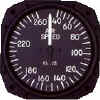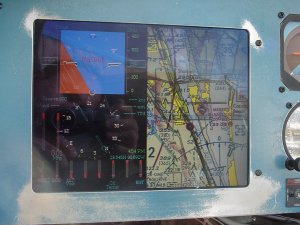 Instrument Panel and Wiring
Instrument Panel and Wiring

 Instrument Panel and Wiring
Instrument Panel and Wiring

OR HOW NOT TO DO IT!
The instrument panel will, in many cases, represent the greatest total investment in your homebuilt aircraft.
I have started on my instrument panel. I made a list of those items which I felt are the required items first. The first decision was rather to build a VFR only panel or an IFR capable panel. Since the mission profile for my aircraft called for a cross country airplane, which the KIS Cruiser is an excellent example, an IFR panel would be the most suitable choice. This will dictate many of the "Required" items for any panel.
 |
 |
 |
 |
|
|
 Rocky Mtn Engine Monitor |
 Control Vision Switch Panel |
Control Vision Power Indicator |
Yes sir, I made my list, I checked it twice, and I started buying
those
instruments that I was confident would be required. First was the
Airspeed
Indicator, Altimeter, Attitude Indicator, Directional Gyro, Switch
Panel,
and Chronometer. Next on the list to purchase was the Rocky
Mountain
Encoder and probably the S-Tec Autopilot. I had (note the past
tense
used here) already decided on the basic instrument layout and cut the
panel
for those instruments. Several were already mounted on the panel
and
ready to start wiring and/or plumbing as required. The left side
of
the panel which would include all the basic instruments and switches was
finalized. (again, note the past tense)
But THEN came
Oshkosh or if you prefer,
"AirVenture 2001"
and all my best laid plans went down the toilet.
 |
 BLUE MOUNTAIN HAS CLOSED |
What this system includes is practically everything you would
normally
have spread all across your panel. All primary flight
instruments,
engine instruments, CDI, GPS Moving Map Display, and an Autopilot
control
built into one neat package and single display. Its lighter,
smaller,
and does away with the vacuum pump requirement. (The vacuum pump
is
probably one of the highest failure items and has been blamed in
several
accidents in IFR conditions.) When everything is included and you
total
the costs, it comes to a significant savings over the price of the
individual
instruments and displays.
| - True Course | - Wind speed and direction (true) |
| - Groundspeed | - Distance to Waypoint |
| - Time To Go (hh:mm) | - Current time |
| - Current GPS Position | - Fuel in tanks at takeoff |
| - Fuel remaining in tanks | - Fuel flow |
| - Fuel remaining at desintation | - Outside air temperature |
| - True airspeed | - Density altitude |
Photos of the Blue Mountain Componets (Mistake)
YES, great you say, but
what about backup?
Backup was a primary concern for me as well. I could easily see adding the Blue Mountain EIFS as the primary and retaining those nasty vacuum gauges as the backups, but what a waste of panel space. Blue Mountain has now come out with a second unit called EFIS Lite which will be an excellent backup system. They have also added and Autopilot and Servos to their list of offerings.
|
|
|
EFIS Lite BLUE MOUNTAIN HAS CLOSED |
BLUE MOUNTAIN HAS CLOSED
AND NO LONGER SELLING ANY
PRODUCTS...SUPPORT HAS
ALSO ENDED!
**** As a result
of the long term between my purchase of the Blue Mountain System and
the finish of my plane I ended up throwing the entire Blue Mountain
System into the trash without ever having installed it. A waste
of a lot of money but I could not go forward with the installation of a
system that was outdated years earlier and had no support and no
updates for the software. I did learn one very valuable lesson
from this experience which was to NOT purchase your avionics and any
other major components before you are actually ready to install
them. I started with steam gauges and moved to the Blue Mountain
and still wasted a lot of money and time. Finally, only after the
plane was painted, the engine inspected and rebuilt, everything was
assembled did I finally order and receive my final system from Dynon
Avionics. I am installing the Dynon SkyView DX system and all the
associated components.